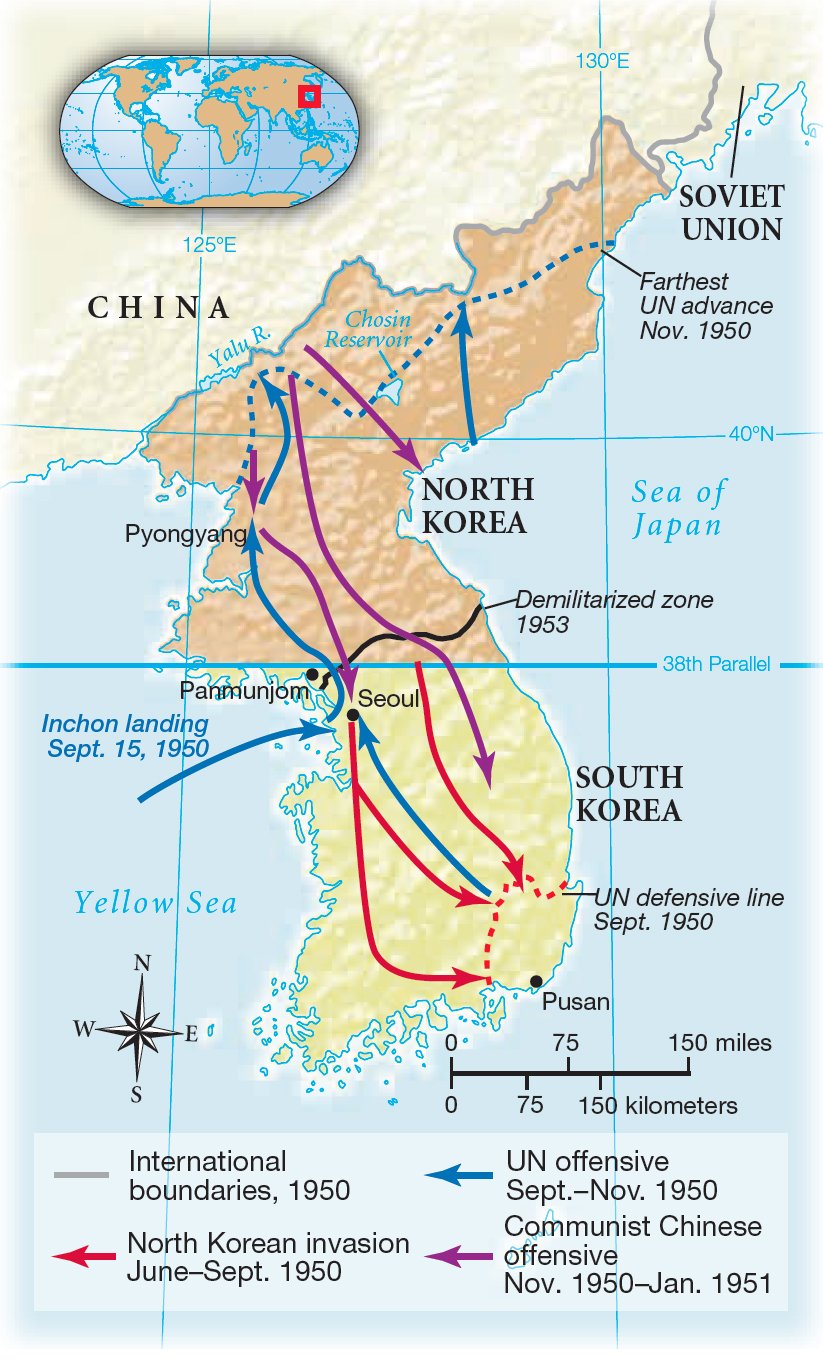Korea and the Military Implementation of Containment
Printed Page 797
The Korean War grew out of the artificial division of Korea after World War II. Having expelled the Japanese, the United States and the Soviet Union created two occupation zones separated by the thirty-eighth parallel (Map 26.3). With Moscow and Washington unable to agree on unification, the United Nations sponsored elections in South Korea in July 1948. The American-favored candidate, Syngman Rhee, was elected president, and the United States withdrew most of its troops. In the fall of 1948, the Soviets established the People’s Republic of North Korea under Kim Il-sung and also withdrew. Although unsure whether Rhee’s repressive government could sustain popular support, U.S. officials appreciated his anticommunism and provided economic and military aid to South Korea.
 Conflict between North Korean forces, supported by China and the Soviet Union, and South Korean and U.S.-led UN forces over control of South Korea. Lasting from 1950 to 1953, the war represented the first time that the United States went to war to implement containment.
Conflict between North Korean forces, supported by China and the Soviet Union, and South Korean and U.S.-led UN forces over control of South Korea. Lasting from 1950 to 1953, the war represented the first time that the United States went to war to implement containment.

Skirmishes between North and South Korean troops at the thirty-eighth parallel began in 1948. Then, in June 1950, 90,000 North Koreans swept into South Korea. Truman’s advisers assumed that the Soviet Union or China had instigated the attack (an assumption later proved incorrect), and he quickly decided to intervene, viewing Korea as “the Greece of the Far East.” With the Soviet Union absent from the Security Council, the United States obtained UN sponsorship of a collective effort to repel the attack. Authorized to appoint a commander for the UN force, Truman named World War II hero General Douglas MacArthur.
Sixteen nations sent troops to Korea, but the United States furnished most of the personnel and weapons, deploying almost 1.8 million troops and dictating strategy. By dispatching troops without asking Congress for a declaration of war, Truman violated the spirit if not the letter of the Constitution and contributed to the expansion of executive power that would characterize the Cold War. The first American soldiers rushed to Korea unprepared and ill equipped, and U.S. forces suffered severe defeats early in the war. The North Koreans took the capital of Seoul and drove deep into South Korea, forcing UN troops to retreat to Pusan. Then, in September 1950, General MacArthur launched a bold counteroffensive at Inchon, 180 miles behind North Korean lines. By October, UN and South Korean forces had retaken Seoul and pushed the North Koreans back to the thirty-eighth parallel. Now Truman had to decide whether to invade North Korea and seek to unify the country.